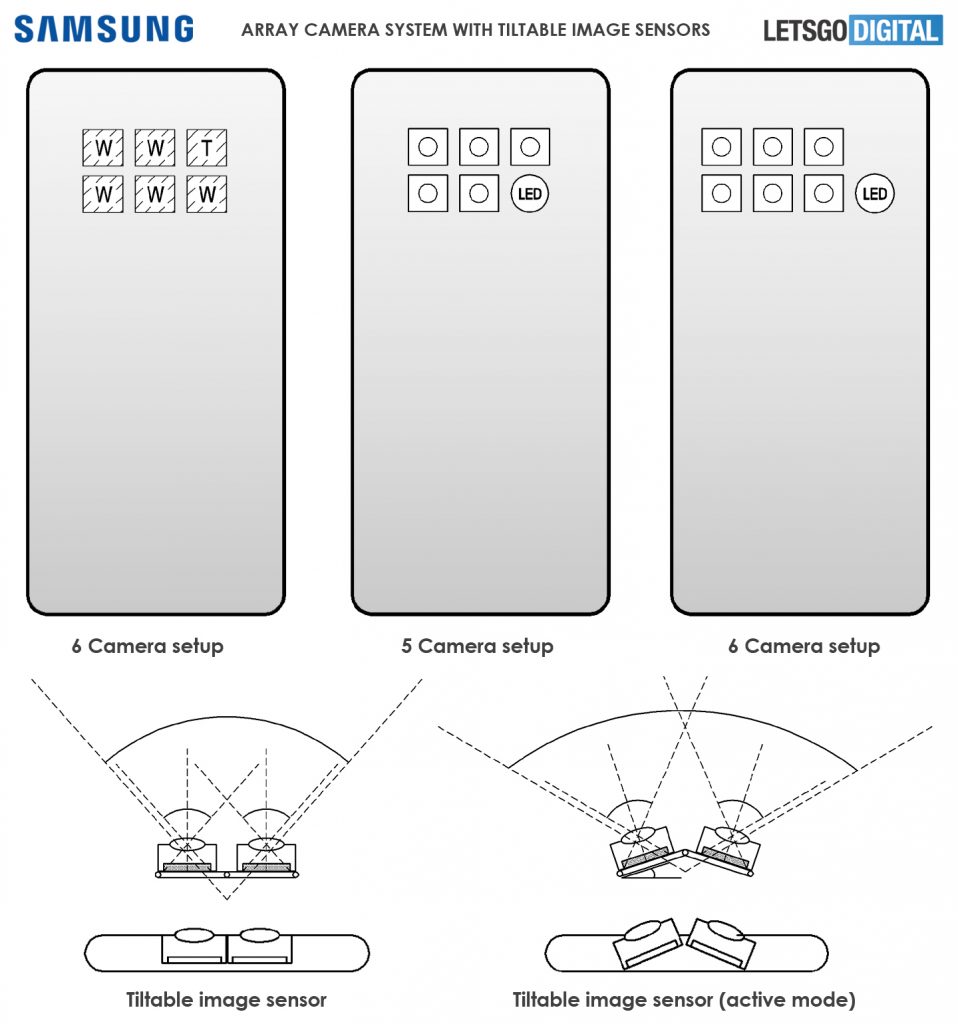With each passing generation, smartphone vendors have been improving and, in certain cases, even raising the number of image sensors for their handset offerings. Now, a recent Samsung patent has revealed a new device that features a whopping 6 cameras on the rear, including a periscopic lens.
The South Korean tech giant applied for this patent back in December 2019 with the WIPO (World Intellectual Property Office) which was published earlier this week on June 11. While the 6 sensor camera module is eye catching, the main aspect regarding this camera module is its tilting mechanism for its sensors. Look at the images in the patent, we can observe the image sensors being able to tilt.

According to the patent, the Samsung smartphone uses 5 wide angle image sensors with a 28mm focal length on the rear alongside a telephoto lens. These sensors are arranged horizontally with three on each row and an LED flash. In the normal mode, these cameras face the regular forward direction, but in the “active mode,” they can tilt towards the horizontally or vertically.
Editor’s Pick: Samsung may not supply Huawei with chips for its smartphones
This enables the sensors to achieve a wider focal length overall and may even help in producing panoramic shots without moving the smartphone itself. Furthermore, the tilting lenses are also said to offer a ‘pano-bokeh effect,’ which implied blurred backgrounds on a panoramic image. This moving lens technology could also have the 5 wide angle sensors work simultaneously to offer a better image that is stitched together.
Unfortunately, this form of array cameras are still too expensive to mass produce, but do offer various advantages. An example being improved low light shots through the use of the array camera module. Regular images could also have a higher dynamic range and the bokeh effect could target more subjects individually as well.

The Samsung patent also goes in depth regarding the shortfalls of this system, with a notable one being the size of the camera module. Since it will be housed in a flagship device, the device may need to have a popup mechanism to house the sensor to achieve the movement, while maintaining thinness. Unfortunately, it is unknown if Samsung would actually develop and sell the device in the near future, but the technology does offer a glimpse into the future generations of smartphones.
UP NEXT: Huawei launches 2020 edition of MateBook X Pro, MateBook 13, and MateBook D 15 in Canada
(Via)







